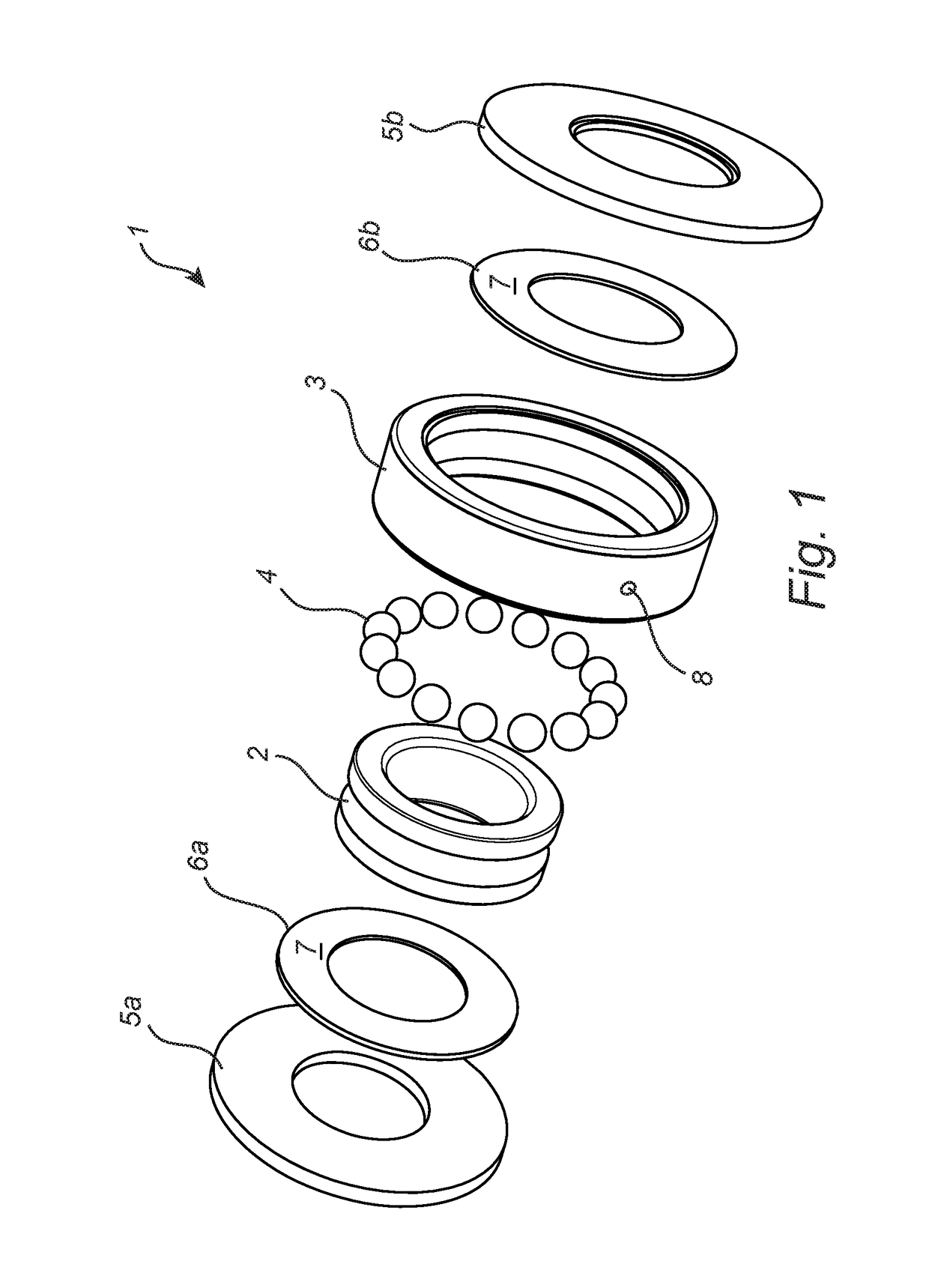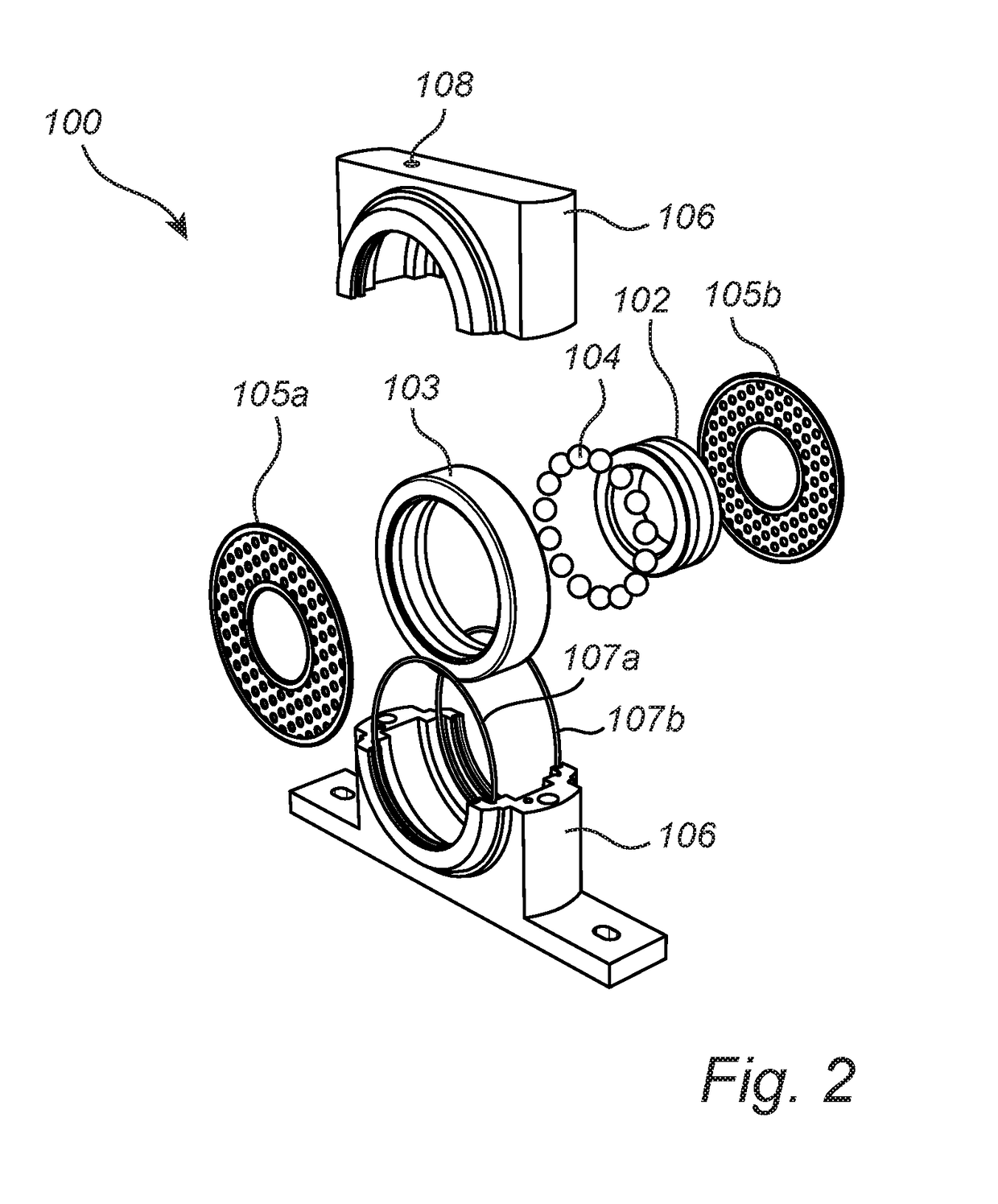Bearing with condition monitoring sensor
a condition monitoring and sensor technology, applied in the direction of instruments, mechanical equipment, rotary machine parts, etc., can solve the problems of surface erosion and cavitation within the bearing, hydrogen embrittlement, and failure of the bearing,
- Summary
- Abstract
- Description
- Claims
- Application Information
AI Technical Summary
Benefits of technology
Problems solved by technology
Method used
Image
Examples
Embodiment Construction
[0022]The present invention will now be described more fully hereinafter with reference to the accompanying drawings, in which currently preferred embodiments of the invention are shown. This invention may, however, be embodied in many different forms and should not be construed as limited to the embodiments set forth herein; rather, these embodiments are provided for thoroughness and completeness, and fully convey the scope of the invention to the skilled person.
[0023]FIG. 1 shows a bearing arrangement 1 with a bearing that comprises an inner race 2 and an outer race 3 arranged coaxially with each other. Several rolling elements 4 in the form of balls are arranged between the inner and outer races 2, 3. A bearing lubricant (not shown) is arranged in the empty spaces between the inner and outer races 2, 3 so as to reduce friction between the rolling elements 4 and the inner and outer races 2, 3. The bearing lubricant will hereinafter be referred to as the “lubricant”. The bearing fu...
PUM
| Property | Measurement | Unit |
|---|---|---|
| electronegativity | aaaaa | aaaaa |
| electrically conductive | aaaaa | aaaaa |
| friction | aaaaa | aaaaa |
Abstract
Description
Claims
Application Information
 Login to View More
Login to View More - R&D
- Intellectual Property
- Life Sciences
- Materials
- Tech Scout
- Unparalleled Data Quality
- Higher Quality Content
- 60% Fewer Hallucinations
Browse by: Latest US Patents, China's latest patents, Technical Efficacy Thesaurus, Application Domain, Technology Topic, Popular Technical Reports.
© 2025 PatSnap. All rights reserved.Legal|Privacy policy|Modern Slavery Act Transparency Statement|Sitemap|About US| Contact US: help@patsnap.com



